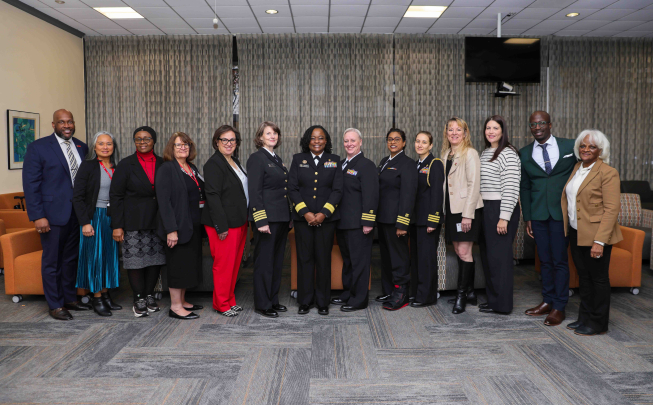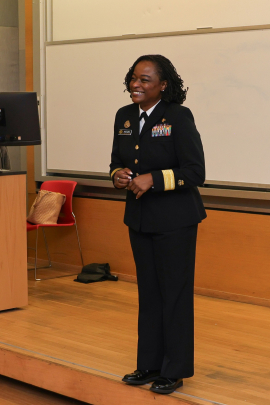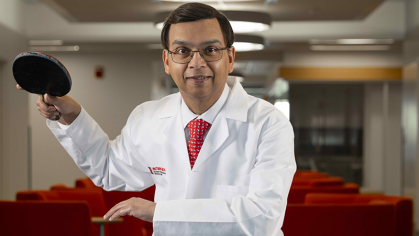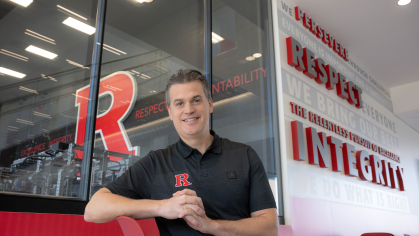Faculty Excellence Draws Nation's Chief Nurse to Rutgers
When Rear Admiral Jennifer Moon sat among hundreds of inductees at the American Academy of Nursing conference last month, she noticed the remarkable number of Academy fellows who were Rutgers faculty.
“It really stood out how well Rutgers was represented,” said Moon, chief nurse officer for the U.S. Public Health Service Commissioned Corps (USPHS). “I made a mental note: I gotta go visit.”
Last week, Moon made good on that promise to herself, spending Wednesday morning at the Rutgers University–Newark campus meeting with administrators and students from both the School of Nursing and the School of Social Work.
The visit served a dual purpose: recognizing Rutgers' standing in health professions education while recruiting students for a federal service that most Americans – including nearly all the students Moon addressed – have never heard of.
The U.S. Public Health Service Commissioned Corps is one of the nation's eight uniformed services, tracing its roots to 1798 when it operated marine hospitals at ports to treat sailors returning with infectious diseases. Today, its roughly 5,000 nurses, social workers, physicians, dentists, pharmacists, therapists, and other health professionals serve in multiple federal agencies, from the Centers for Disease Control and Prevention to the Indian Health Service to the Department of the Interior.
Despite its 200-year history and critical mission, the service faces a significant challenge: it's authorized for 6,500 officers but currently operates at about 5,000, leaving roughly 1,500 positions unfilled at a time when public health threats are increasingly complex.
“We really need social workers. We really need nurses,” Moon told the group, emphasizing that filling these gaps is essential for protecting the nation’s health.
The service operates much like the military: members commit to serve, hold sea service ranks, wear uniforms, and can be deployed to respond to hurricanes, disease outbreaks or other public health emergencies.
“The opportunities that we have, the impact that we have, the influence that we have – public health nursing is much broader and more varied than typical clinical nursing,” Moon said.
Officers can work on infectious disease surveillance one year and health policy implementation the next, building careers that span local clinics to national leadership.
Moon highlighted a less obvious advantage when she spoke to nursing and social work students: career continuity.
“When you're in the uniform service, your experience and rank carry weight,” she said. “When transferring to a new position within the federal government, you're not starting over as far as respect or your influence or your impact."
Moon addressed 81 second-degree undergraduate nursing students and 26 graduate social work students during her visit. She also met with school leadership during a reception where she discussed potential partnerships and student opportunities within the federal public health system.
“This is an opportunity for students to really see in action what they've been learning in the classroom,” said Antoinette Farmer, interim associate dean for academic affairs at the School of Social Work. “Students may not have even thought of using their skills at a national or global level.”
Angela Starkweather, dean of the School of Nursing, said Moon's visit opens possibilities for internships and connections to New Jersey's emergency response systems, extending the schools' impact beyond typical healthcare settings.
It was also a valuable testimony to the quality of the program they attend.
“This was a call from her office because she had been so impressed with our faculty and students,” Starkweather said. “For our students, it is a chance to see that the work they are doing here is on the radar of people who are shaping national health policy.”








